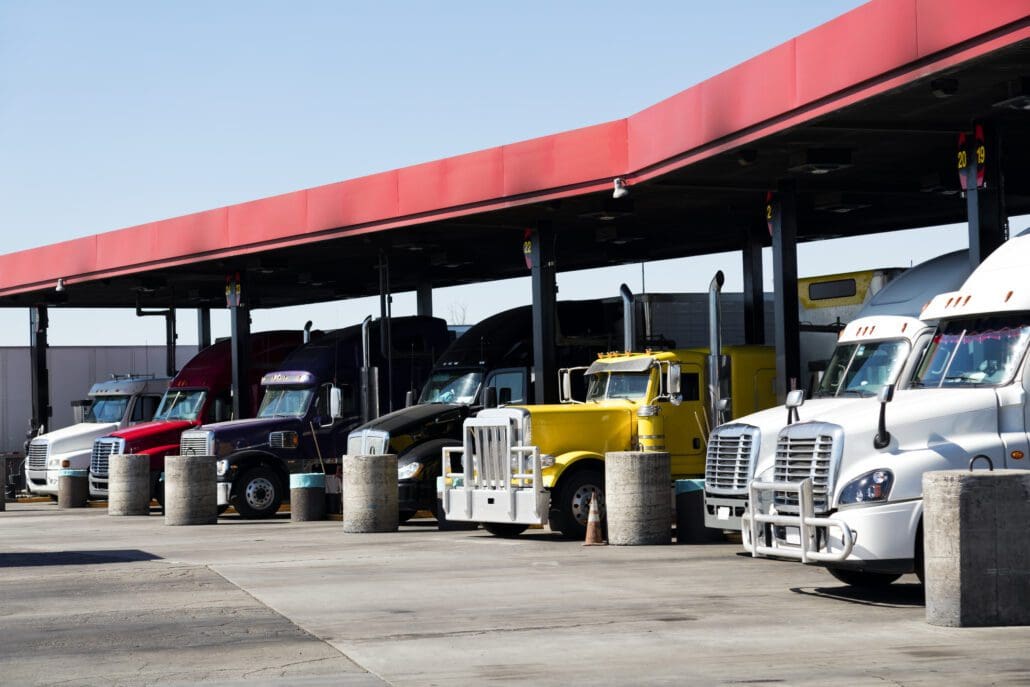
Top 10 Trucking Industry Challenges
Plane trucks are flying towards the destination with the brightest. 3d render and illustration.
Every year around 17 million cars are sold in the US, with virtually all of them shipped to dealers on trucks. According to the CFS, trucks transported 71.6% or $10.4 trillion of the $14.5 trillion value of all goods shipped in the country last year.
If you’re in the transportation business, you’re already aware of the challenges the industry faces in transporting each of those goods due to logistics issues. A few examples include high operation costs, misunderstanding or inability to comply with regulations, or lack of technology, such as paper-based wasteful procedures, absence of GIS support for route optimization, in-person driver on-boardings, and detentions in ports due to miscommunication, as well as a lack of proper equipment for loading or unloading goods, among other things.
The American Transportation Research Institute (ATRI) released a report with a survey with more than 3,000 responses from carriers and professional drivers all over the country that listed the following top 10 critical issues currently affecting the trucking industry.
1. Driver Shortage
For six years in a row, driver shortages ranked at the top of the list of concerns. In the last few years, the U.S. and most countries’ economies were rocked by COVID-19, causing an economic impact similar to the Great Depression and making trucking companies suffer a record deficit of 80,000 drivers.
To keep up with increasing freight demand across the country over the next decade, trucking companies must recruit 1 million young drivers, according to ATA Chief Economist Bob Costello. However, some experts point out that younger generations are not replacing retiring drivers as fast as needed to meet the demand.
The issue increased in 2020, with some drivers leaving due to the FMCSA (Federal Motor Carrier Safety Administration) Drug and Alcohol Clearinghouse and others leaving the industry over pandemic-related health concerns.
2. Driver Health and Well-being
A professional truck driver earns an average of $81,476 per year, far more than the national average of $51,480. However, many of them states that the salary does not compensate for the long working hours, the nights away from home, the risks they take when going out on the road, or the impact on their mental and physical health.
The FMCSA has made some efforts to restrict the number of hours that truck drivers can spend behind the wheel and to require mandatory rest during the drive if there has not been a minimum of 8 hours since the driver’s last haul.
3. Truck Parking
Truck drivers consistently rank parking availability as a top concern in most surveys. When drivers cannot find parking, they must park illegally or continue searching, often violating federal hours-of-service (HOS) rules. 70% of drivers admit to violating HOS rules to find parking, and 96% have had to park in areas not designed for trucks. “As a last resort, drivers reluctantly park in unsafe, illegal areas like highway shoulders, interstate entry ramps, exit ramps, and abandoned properties. Naturally, 84% of drivers feel unsafe when parked in illegitimate areas”, David Heller, VP of government affairs, states for Freight Waves.
Once again, the pandemic also played its role in the problem. Many States closed public rest areas to mitigate covid propagation, and truck drivers struggled more to find an appropriate lot.

4. Compliance, Safety, Accountability (CSA)
The FMCSA has implemented multiple systemic changes to address CSA distress. But according to ATRI, “Carriers continue to report challenges with data quality, peer group assignments, and the Crash Preventability Program.”
5. Insurance Cost/ Eligibility
The American Transportation Research Institute notes that volatile and increasing insurance premiums have been a BIG industry concern. Its Analysis of the Operational Costs of Trucking report found that insurance premium costs per mile increased by 47% over the last ten years, from 5.9 cents to 8.7 cents. Smaller fleets are the most affected by these increases. Many cited that as the primary reason for going out of business.
6. Driver Retention
According to a recent survey of 24,000 drivers, more than 30% of drivers quit within the first three months. Additionally, approximately 50% leave within the first six months. The numbers are alarming.
Learn more in our next week’s article about how technology, better industry practices, and improving labor conditions could be the solution to retaining and attracting new drivers
7. Tort Reform
Tort reform has not been a concern since 2012. But, for ATRI, its return to the list has to do with the “Growing attention and concern over truck crash litigation, nuclear verdicts, and criminal activity involved in staged crashes.”
8. Economy Volatility
The COVID-19 pandemic caused a recession worse than the 2008 one. With businesses trying to reduce operation costs, millions of Americans got unemployed. While business and job growth began to rebound this year, it is still hard to establish when the U.S. economy will return to pre-pandemic levels.
9. Detentions at Customer Facilities
According to ATRI, “34 percent of survey respondents indicated that detention times were worse during the pandemic—possibly the result of reduced staffing at shipper and receiver facilities.” Even though detention exists to help compensate drivers for lost time, they get paid by moving and delivering loads. It means that each minute of waiting is a time during which drivers and companies do not make money.
10. Hours of Service (HOS)
The final HOS rule went into effect in September 2020 and took care of many of the issues identified in previous years’ surveys, including the short-haul exception, the 30-minute rest break, and the sleeper berth provision. Carriers, on the other hand, are still adapting to regulatory changes and discussing concerns about fatigue-related accidents.
You can view the full ATRI report here.
How is RCG Logistics combating these trucking industry challenges?
Technology plays an essential part in our day-to-day operations. If we look back at how the planning industry has always been, it has been driven by manual and paper-based processes. Whether it be for invoicing, receipts, eBOLs, etc. Paper waste is a severe problem in many industries nowadays.
Over time we have eliminated these paper methods by applying technology in our day-to-day operations. Processes that used to take hours, now take minutes. It allows our team to focus more on client’s needs and ensure loads arrive at their destination more quickly and efficiently.
RCG has reinvested over 2 million dollars into developing innovative software to make shipping cars more efficient, and convenient. Whenever you buy a smartphone or an app for anything, many companies emphasize making the experience faster and better for the consumer. Why should logistics not be the same? Drivers can access all their load information through an app. Load information is then available for real-time tracking, and that information is then fed to our customers’ portals so that they can then track their inventory 24/7.
Contact one of our agents now!

